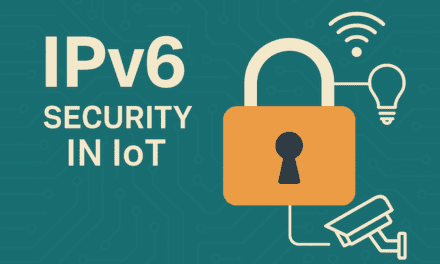In the interconnected world of Internet of Things (IoT), the transition to IPv6 is reshaping how devices communicate over networks. Microcontrollers, such as the ESP8266 and ESP32, are at the forefront of this evolution, offering robust IPv6 capabilities. In this blog post, we will delve into the IPv6 features of microcontrollers in general, with a specific emphasis on the ESP8266 and ESP32, and highlight three diverse use cases in different areas.
IPv6 Capabilities of Microcontrollers: The adoption of IPv6 in microcontrollers revolutionizes IoT applications, providing a larger address space and enhanced security features for seamless connectivity. Microcontrollers, including the ESP8266 and ESP32, can now effortlessly connect to IPv6 networks, enabling efficient data transmission and communication over the internet. With native IPv6 support, these microcontrollers empower developers to create IoT projects with advanced networking functionalities.
ESP8266 and ESP32: Leading the IoT Connectivity Charge Developed by Espressif Systems, the ESP8266 and ESP32 microcontrollers have garnered acclaim in the IoT community for their versatility and performance. Both platforms boast native support for IPv6, making them ideal choices for IoT projects that demand advanced networking capabilities. Equipped with Wi-Fi connectivity, low power consumption, and a rich feature set, the ESP8266 and ESP32 excel in a wide array of IoT applications that require secure communication over IPv6 networks.
Use Cases of IPv6-enabled ESP8266 and ESP32 Microcontrollers:
- Smart Home Automation: In the realm of smart home automation, ESP8266 and ESP32 microcontrollers play a pivotal role in creating interconnected systems. With IPv6 support, these devices can securely connect to the internet, enabling remote monitoring and control of smart devices. For instance, an ESP8266-powered smart lighting system can adjust brightness levels based on ambient light conditions, enhancing energy efficiency and user comfort.
- Industrial IoT (IIoT) Monitoring: For industrial IoT applications, the ESP32 microcontroller with IPv6 capabilities offers transformative solutions for monitoring and controlling industrial processes. By integrating sensors and actuators with ESP32 devices, industrial operators can gather real-time data on machine performance and environmental conditions. With IPv6 support, these devices can securely transmit data to cloud servers for analysis and decision-making. For example, an ESP32-based predictive maintenance system can detect machinery anomalies and trigger maintenance alerts, optimizing productivity.
- Environmental Monitoring and Agriculture: In environmental monitoring and agriculture, the ESP8266 microcontroller with IPv6 connectivity provides a cost-effective solution for collecting data from remote sensors. By deploying ESP8266 devices in agricultural fields or natural habitats, researchers can monitor soil moisture levels and air quality parameters in real time. With IPv6 support, these devices can transmit sensor data to cloud platforms for analysis. For instance, an ESP8266-driven smart irrigation system can adjust watering schedules based on soil moisture readings, enhancing water efficiency and crop yield.
Here’s an example code snippet demonstrating how to configure IPv6 on an ESP32 using the Arduino IDE:
#include <WiFi.h>
const char* ssid = "YourNetworkSSID";
const char* password = "YourNetworkPassword";
void setup() {
Serial.begin(115200);
// Connect to Wi-Fi network
WiFi.begin(ssid, password);
Serial.println("Connecting to Wi-Fi network...");
while (WiFi.status() != WL_CONNECTED) {
delay(1000);
Serial.println("Connecting...");
}
Serial.println("Connected to Wi-Fi network");
// Enable IPv6
WiFi.enableIpV6();
// Print the ESP32's IPv6 address
Serial.print("IPv6 Address: ");
Serial.println(WiFi.localIPv6().toString());
}
void loop() {
// Your code here
}In this code snippet:
- Replace
"YourNetworkSSID"and"YourNetworkPassword"with your Wi-Fi network’s SSID and password. - The
WiFi.begin(ssid, password)function connects the ESP32 to the Wi-Fi network. - The
WiFi.enableIpV6()function enables IPv6 support on the ESP32. - The
WiFi.localIPv6().toString()function retrieves the ESP32’s IPv6 address, which is then printed to the Serial Monitor.
Make sure you have the necessary libraries installed in the Arduino IDE to work with the ESP32 board and the WiFi module. This code snippet provides a basic example of configuring IPv6 on an ESP32; you can further customize it based on your specific requirements and use cases.
In conclusion, the IPv6 capabilities of microcontrollers like the ESP8266 and ESP32 offer boundless opportunities for innovative IoT applications. From smart home automation to industrial monitoring and environmental sensing, these versatile platforms empower developers to leverage advanced networking features for enhanced connectivity and sustainability in the IoT landscape.




